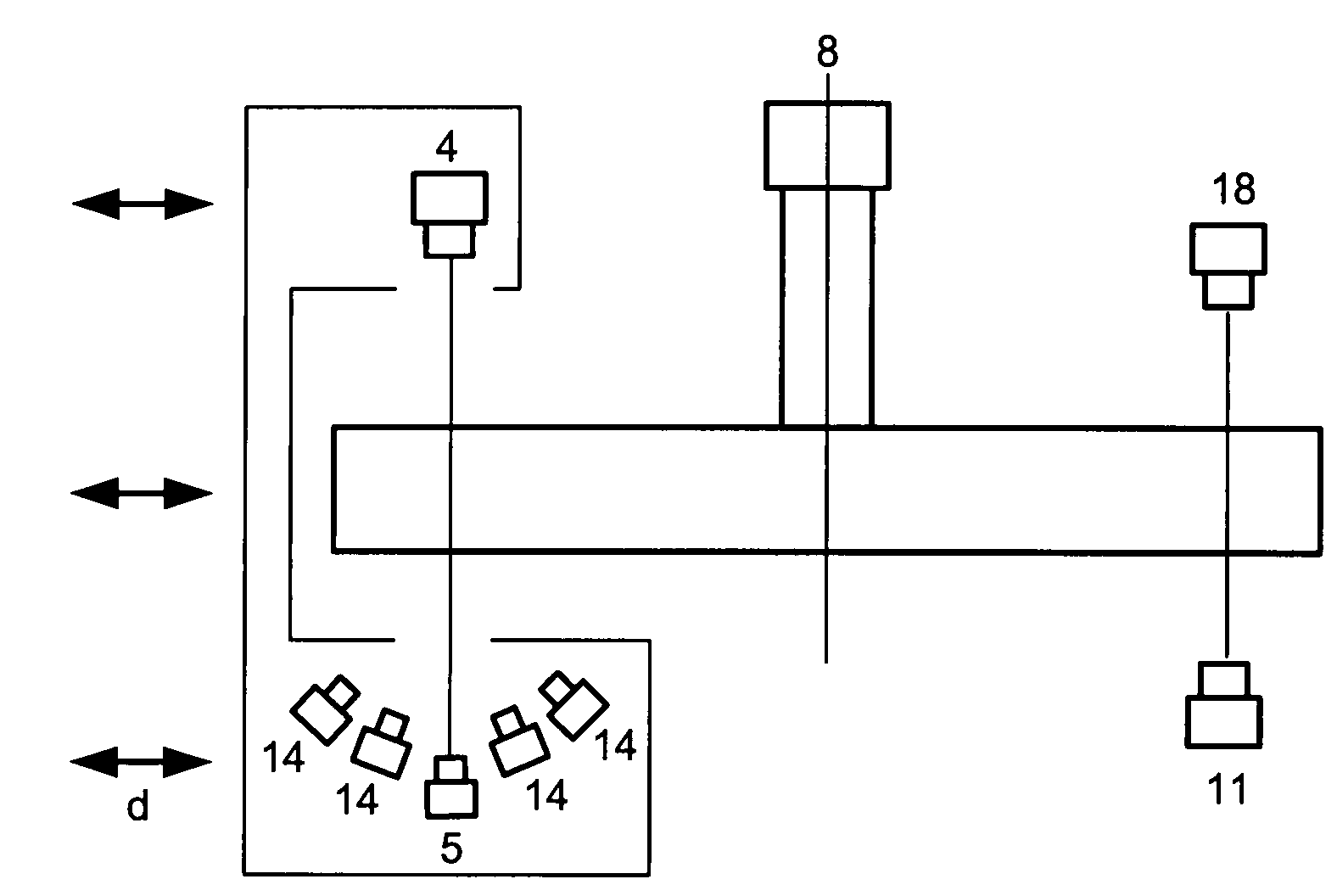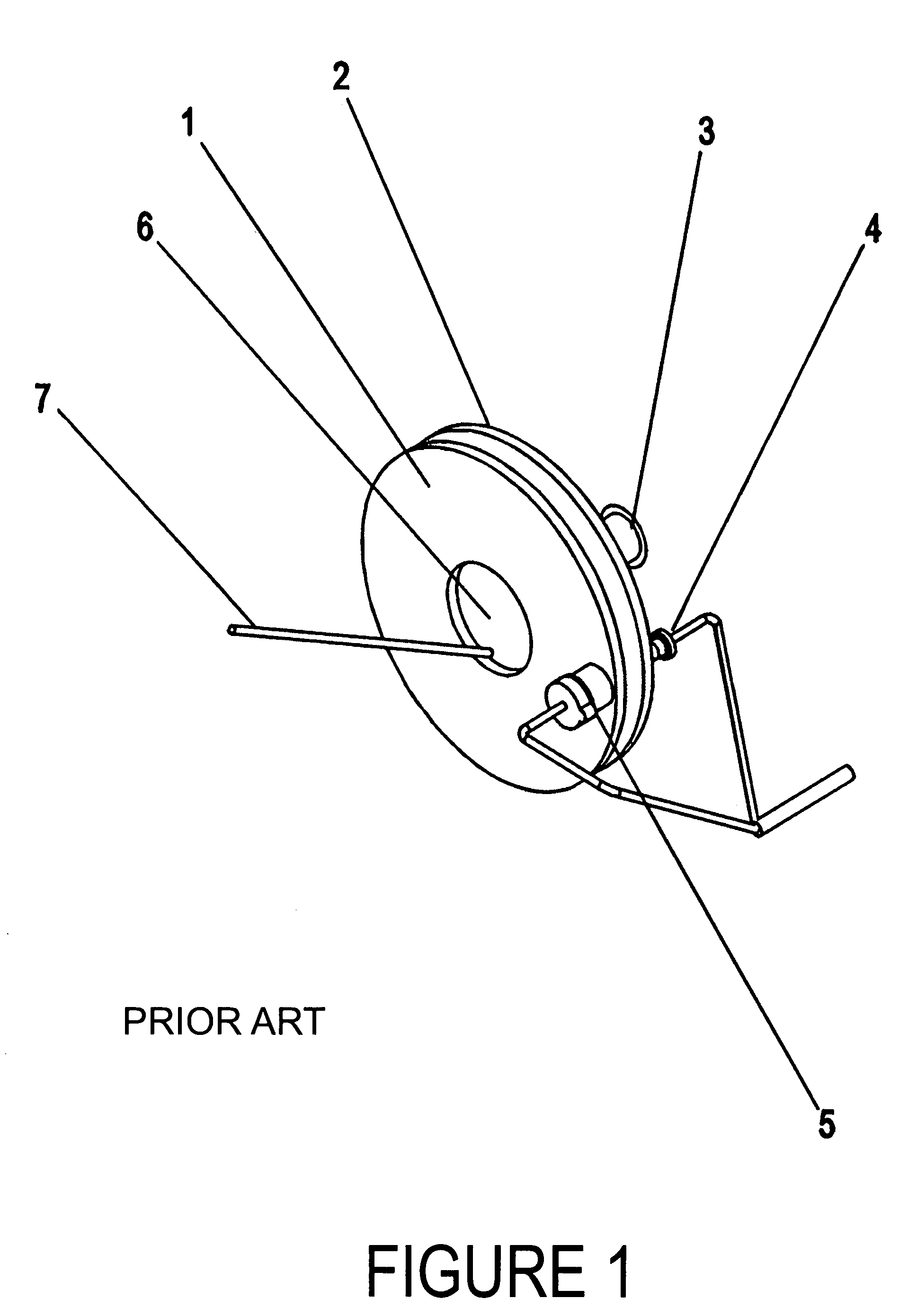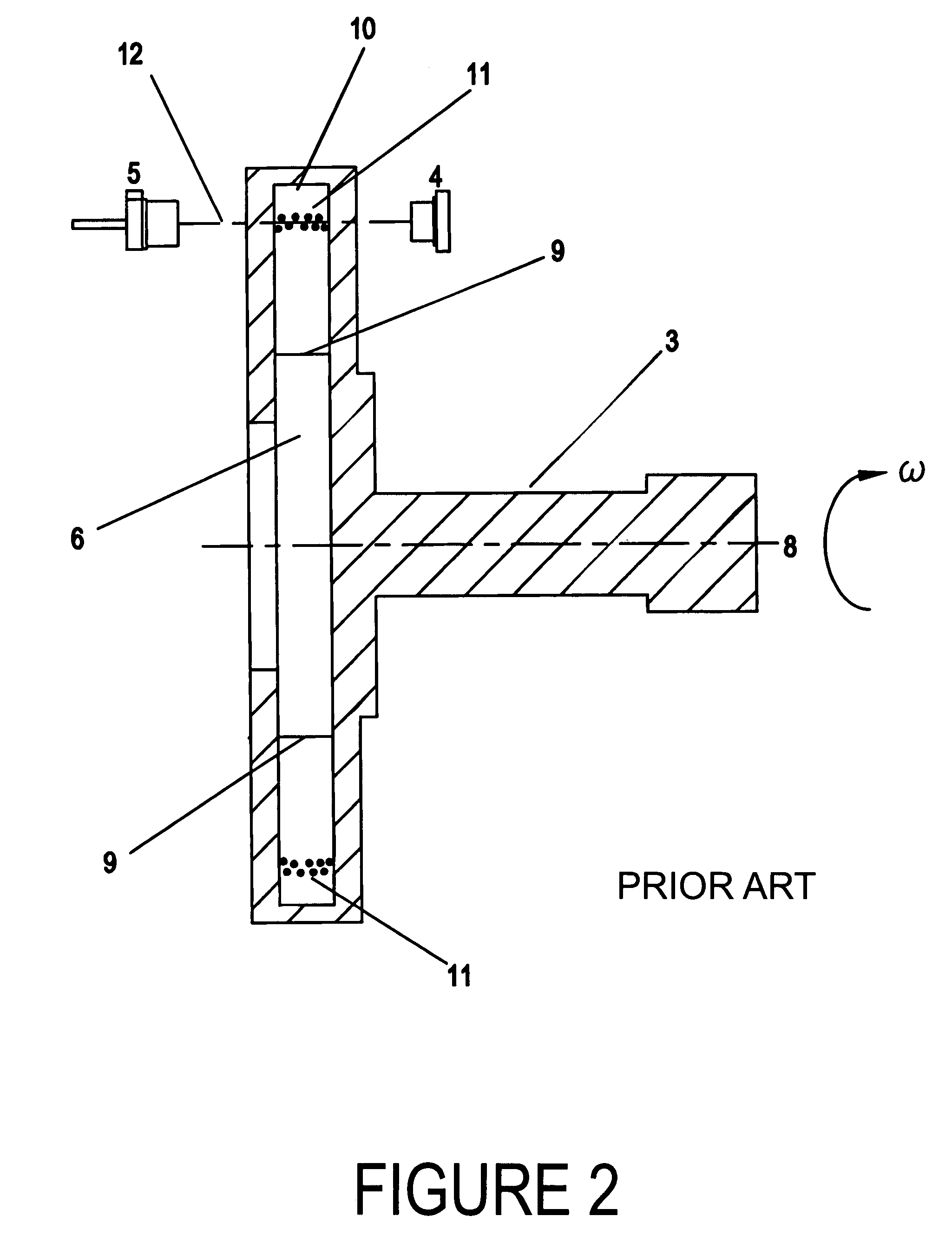Method and apparatus for characterizing solutions of small particles
a technology of solution and small particles, applied in specific gravity measurement, centrifuges, instruments, etc., can solve the problems of easy detection of problems such as the separation mechanism itself, and achieve the effect of accurate size and distribution information, large uncertainty in interpretation, and ambiguous issues
- Summary
- Abstract
- Description
- Claims
- Application Information
AI Technical Summary
Benefits of technology
Problems solved by technology
Method used
Image
Examples
Embodiment Construction
[0025]The typical rotor and sample containing elements of a centrifuge are shown in FIG. 1 for an embodiment corresponding to that of a disk centrifuge. These include the transparent side plates 1 and 2 forming the sides of a fluid-containing sample chamber therebetween and a central rotor hub 3 attached to one of the plates. A light source 4 producing a finely collimated light beam is shown with a detector cell 5. Samples are introduced generally through the center opening 6 of transparent side plate 1 via inlet channel 7. Such and similar structures have been disclosed, for example, in the U.S. Pat. No. 4,311,039 by Koehler et al. and U.S. Pat. No. 5,786,898 by Fitzpatrick. FIG. 2 shows an end-on view of the sample chamber during operation. The particle sample is inserted through the opening 6 concentric with the axis of rotation 8 through the rotor 3 so that it begins its separation once in contact with the fluid meniscus 9. Because of centrifugal forces, the sample migrates outw...
PUM
| Property | Measurement | Unit |
|---|---|---|
| size | aaaaa | aaaaa |
| size | aaaaa | aaaaa |
| radius | aaaaa | aaaaa |
Abstract
Description
Claims
Application Information
 Login to View More
Login to View More - R&D
- Intellectual Property
- Life Sciences
- Materials
- Tech Scout
- Unparalleled Data Quality
- Higher Quality Content
- 60% Fewer Hallucinations
Browse by: Latest US Patents, China's latest patents, Technical Efficacy Thesaurus, Application Domain, Technology Topic, Popular Technical Reports.
© 2025 PatSnap. All rights reserved.Legal|Privacy policy|Modern Slavery Act Transparency Statement|Sitemap|About US| Contact US: help@patsnap.com



